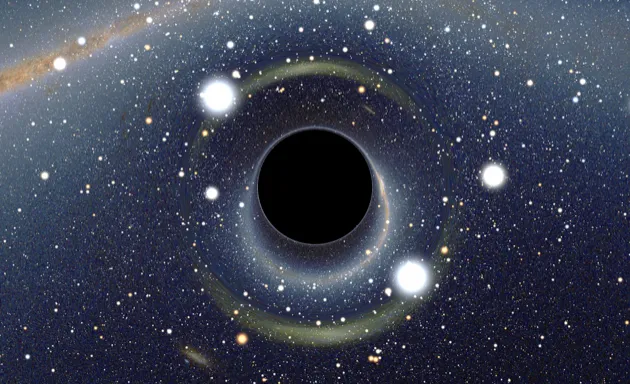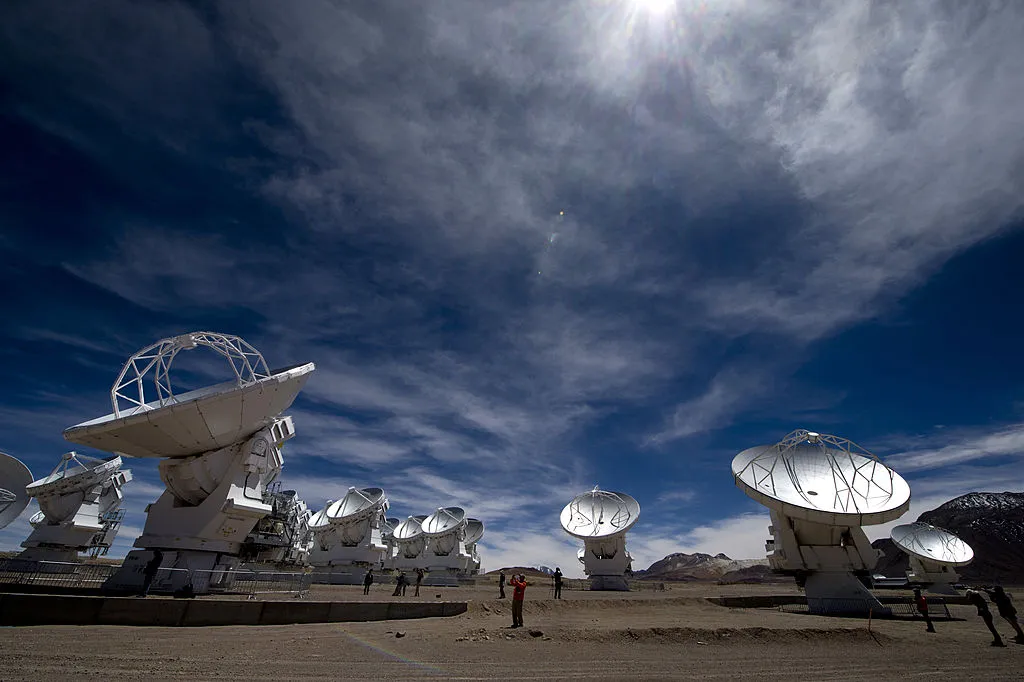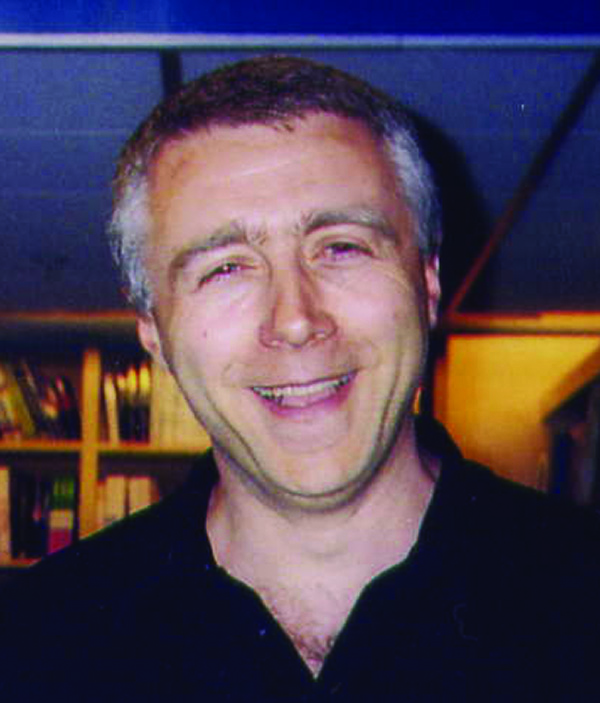Wednesday 10 April was an epoch-making moment in the history of science. At six simultaneous press conferences worldwide, an international of team of astronomers unveiled the first ever image of a black hole.
“It was one of the most exciting days of my life,” says Feryal Özel of the University of Arizona in Tucson, who heads the modelling team. “For me, it’s the culmination of nearly two decades of work.”
In fact, the team observed not one black hole but two: Sagittarius A*, a supermassive black hole in our own Milky Way weighing 4.3 million times the mass of the Sun, and a cousin in the galaxy M87, which is about 1,000 times bigger.
Read more:
- Black holes: how did we discover these 'dark stars'?
- Everything you wanted to know about black holes (and where to find them)
The first image revealed is of M87 – Sagittarius A*, because it’s smaller, was circled by matter many times while being observed, yielding a blurrier picture. The image of the black hole in M87, since named Powehi, shows detail smaller than the extent of its event horizon, the point of no return for in-falling light and matter. It is only possible to see such exquisite detail because the intense gravity of each black hole acts like a lens, which makes the image appear five times larger than its horizon.
The horizon in M87 shows up as a dark “shadow backlit by intense radio waves emitted by matter heated to incandescence as it swirls down through an accretion disk” onto the black holes. The halo around the shadow is brighter on one side than on the other. “This is because the accretion disk is spinning, causing the light from the part coming “towards us to be boosted relative to that from the part that’s receding,” says Özel.
Discover more about black holes, how we discovered them, and their role in the Universe in the May 2019 issue of BBC Science Focus Magazine - find out how to subscribe here.
The remarkable M87 image was obtained by the Event Horizon Telescope (EHT), an array of radio dishes scattered around the globe which have been harnessed together to simulate a giant telescope the size of the Earth.
Having an Earth-sized telescope is the key to imaging something as tiny as a black hole, because the resolution of such a telescope – the fineness of the detail it can discern – depends on the maximum separation of its component parts.
How are black holes formed?
A black hole forms when matter is compressed into a volume so small that its gravity becomes too intense for anything, even light, to escape. This makes a stellar-mass black hole anywhere in our Galaxy too small for us to see with any Earthbound telescope.
But nature has seen fit to create a second population of black holes. These are “supermassive” ones with masses of up to 50 billion times the mass of the Sun, one of which lurks in the heart of almost every galaxy.
However, on account of being very far away, these behemoths are as difficult to image as stellar-mass black holes in our own neighbourhood. Except in two cases: Sagittarius A*, which is just 27,000 light years away, and its more massive seven billion solar-mass cousin in M87, at a distance of 56 million light years. “This is why they were chosen as targets for the EHT,” says Özel.

There is also the matter of where to look in the light spectrum. High-energy electrons spiralling in the intense magnetic fields extending from a black hole’s accretion disk generate radio waves, which have the advantage that they can easily penetrate the dust shrouding the centres of galaxies and so reach the Earth.
Özel is an expert in simulating what the turbulent environment of a black hole surrounded by a super-heated accretion disk should look like at different wavelengths. “It turns out that the optimum wavelength is 1.3mm,” says Özel. “Not only is it possible to see through the accretion disk to the hole, but our Galaxy and the Earth’s atmosphere are transparent to radio waves at this wavelength.”
Despite this wavelength being used, water vapour in the atmosphere can still absorb some of the precious radio waves. For this reason, the EHT’s astronomers have chosen a time of the year to make observations that maximises the dryness at all telescopes, which are located in places as far-flung as Chile, Hawaii and Greenland. “The optimum time is from the end of March till the end of April,” says Özel.

In April 2017, the EHT observed with telescopes at eight sites; in 2018, a dish in Greenland was added, upping the total to nine. Now, with the addition of a radio dish at Kitt Peak National Observatory in Arizona, there are 10, but it’s observations made in 2017 that have yielded the images of Sagittarius A* and M87.
In each observing run, data from each site is recorded on hard drives. Ordinary drives malfunctioned in the low pressure at the high-altitude telescope sites and had to be replaced by special ones developed for the space programme.
In 2017, a total of 960 drives, each with a capacity of six or seven terabytes – capable of storing 1-2 billion photos – recorded a whopping five petabytes of data. The disks, which together weighed more than half a tonne, were flown to Massachusetts and Bonn in Germany, where the signals from each site were combined on purpose-built supercomputers known as “correlators”.
The individual dishes of the EHT can be considered as tiny elements of a filled-in dish the size of the Earth. But whereas the radio waves impinging on each element of a filled-in dish are reflected to a focus where they are naturally combined, this does not happen for the “elements” of the EHT. The process must be mimicked by playing back the signals on a computer and exactly reproducing the time delays there would naturally have been between them at the focal point.
Getting the signals perfectly synchronised is only possible because at each dish they are recorded alongside clock signals from a super-stable atomic clock. But combining the signals is still hugely time-consuming, because you need to compensate for delays caused by things such as different atmospheric conditions. This is why it has taken so long to analyse the data.
Even this tremendous feat of computing is still only half the job. It’s still necessary to determine what distribution of matter actually caused the pattern of radio waves observed. “Understanding what’s going on requires figuring out what’s happening over a huge range of scales,” says Özel.
We have seen the gates of Hell at the end of space and time
Heino Falcke of Radboud University in Nijmegen
What’s so remarkable is that physicists like Özel have been so successful, and that the image of the black hole in M87 is so close to what they expected to see. But, although this is cause for celebration among physicists, it’s likely to leave laypeople underwhelmed, thinking that they have seen a black hole before.
“We are victims of our own success!” admits Özel. “Artist’s impressions and movie simulations of black holes, based on physicists’ predictions, have turned out to be correct. But those holes were pretend ones. The difference now is that we are seeing the real thing.”
Testing Einstein’s theory of gravity
Özel says she’s “ecstatic” at being part of the team that obtained the first image of a black hole, but that it’s also a huge relief. “Our predictions could have been completely off,” she says. “Thankfully, we got the physics right!”
Among other things, the image of the nucleus of M87 has yielded the mass of its black hole. The diameter of a hole’s event horizon goes up by 6km for each solar mass. Consequently, by measuring the width of the hole in the image and knowing the distance to M87, it has been possible to determine that it weighs in at 6.5 billion times the mass of the Sun.
“This chimes perfectly with the mass deduced from how fast the hole’s gravity is whirling round nearby stars,” says Özel. “That puts it in the top 10 per cent of black holes by mass.”
Listen to the Science Focus Podcast:
- How to keep yourself busy in space - Chris Hadfield
- The most mysterious objects in the Universe - Colin Stuart
Perhaps the most remarkable thing about the image, however, is the sharp “photon ring” that marks the inner edge of the doughnut of light around the hole. This is the point at which light plunges across the event horizon, never to be seen in our Universe again. EHT team member Heino Falcke of Radboud University in Nijmegen, the Netherlands, puts it in perspective: “We have seen the gates of Hell at the end of space and time.”
“The hole is a part of our Universe permanently screened from view,” explains Özel. “A place where our current physics cannot reach.”
Our best current description of black holes is Einstein’s theory of gravity. However, the General Theory of Relativity is likely to be an approximation of a deeper theory. Since it breaks down at the centre of a black hole, where it predicts the existence of a nonsensical point of infinite density. Such a “singularity” is screened from view by the horizon.
The late Stephen Hawking suggested that General Relativity may also break down at the horizon of a black hole, and that the horizon might not actually be the surface of no return everyone believes it to be.
“We have not seen a departure from Einstein’s theory yet,” says Özel, “but finding such a discrepancy would be hugely important.”

Albert Einstein, who never believed in black holes, would have both been pleased that his theory has survived, and astonished that such a nightmarish prediction of this theory turns out to be real.
“The fact that Einstein’s theory, formulated in 1915, so accurately predicts what we have seen in such an extreme environment, is a triumph for science,” says Özel. “Until now, the horizon of a black hole was no more than a mathematical formula on piece of paper,” says Özel. “Now it is a real thing in the real universe.”
The first ever image of a black hole may look fuzzy, but sharper images will be obtained in the years to come. Very probably, it will become an iconic image in the history of science, alongside the Apollo 8 image of Earth rising above the Moon or double spiral staircase of DNA.
“We humans should be proud of ourselves,” says Özel. “It is easy to overwhelmed by everyday events on Earth but we should take some time to think, ‘We have done this amazing thing. We have seen to the edge of space and time’.”
- Read our special report about this historic image of a black hole in the May 2019 issue of BBC Science Focus –subscribe here
Follow Science Focus onTwitter,Facebook, Instagramand Flipboard

